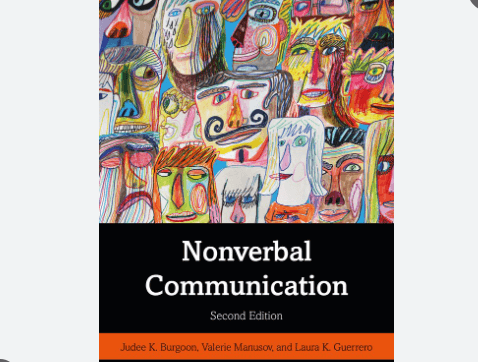Navigating the Maze of Interorganizational Conflict

- Credit | Viral Solutions
- In the vast ecosystem of modern business, interorganizational conflict emerges as a significant challenge, often lurking beneath the surface of seemingly smooth collaborations. A situation of interorganizational conflict may be the continuing battle between U.S. businesses and their global rivals: Ford versus Hyundai, or AT&T versus Verizon, for example. Understanding the dynamics of interorganizational conflict is crucial for businesses aiming to navigate these turbulent waters effectively.
What is Interorganizational Conflict?
Interorganizational conflict refers to disagreements or disputes that arise between two or more organizations. These clashes can occur between businesses in the same industry, like rival tech giants vying for market share, or between organizations from different sectors, such as a construction company and a local environmental group at odds over a development project.
Understanding the Causes: Competition as a Catalyst
Interorganizational conflict arises when disagreements or disputes erupt between two or more organizations. These clashes extend far beyond the simple competition seen between businesses vying for market share.
Market competition is a frequent source of interorganizational conflict. Classic examples include rivalries between established brands like Ford and Hyundai or telecommunication giants like AT&T and Verizon. These companies clash for market share, resources, and customer loyalty. Similarly, energy suppliers vying for dominance may engage in conflict through aggressive marketing tactics or lobbying efforts.
Intriguingly, the realm of interorganizational conflict extends far beyond the marketplace. Here are some key areas where conflict can arise:
- Collaboration Conflicts: Even in collaborative settings, such as joint ventures or community consortiums, disagreements can arise over goals, resource allocation, or decision-making processes.
- Labor Relations: Unions and the organizations employing their members often have conflicting interests, leading to conflict over wages, working conditions, and job security.
- Regulation and Compliance: Government regulatory agencies enforce rules and standards, which can create friction with the organizations they oversee.
- Supplier Relationships: Disagreements over pricing, quality, or delivery schedules can lead to conflict between organizations and their suppliers.
- Activism and Advocacy: Organizations may face conflict with external activist groups who challenge their practices or policies.
Types of Interorganizational Conflict
Interorganizational conflict isn't a monolith. It manifests in various ways, each requiring a nuanced approach. Here's a breakdown of some common types:
- Goal Conflict: This arises when organizations have competing objectives. For instance, a supplier might prioritize cost-cutting measures that compromise quality, leading to friction with a client seeking high-performance products.
- Resource Conflict: When resources are scarce, competition between organizations can intensify. Imagine two companies vying for the rights to develop a limited land plot, creating conflict.
- Perceptual Conflict: Misunderstandings and differing viewpoints can fuel conflict. A disagreement over project deadlines or communication styles between collaborating organizations falls into this category.
- Value Conflict: Deep-seated differences in organizational values can spark clashes. A conflict between a traditional media company and a social media platform with opposing views on privacy is an example.
Impacts of Interorganizational Conflict
Interorganizational conflict can have far-reaching implications for the involved entities and their stakeholders:
- Diminished Performance: Conflict can impede collaborative efforts, leading to reduced productivity, innovation, or quality outcomes.
- Strained Relationships: Prolonged or unresolved conflict strains relationships between organizations, eroding trust and cooperation.
- Reputational Damage: Public perception of collaborating organizations may suffer as conflicts become visible, potentially tarnishing their reputations.
- Opportunity Costs: Resources and efforts expended in managing conflicts represent missed opportunities for pursuing strategic objectives or growth initiatives.
- Innovation Stagnation: Conflict-ridden environments may stifle creativity and innovation, hindering progress and adaptability.
Strategies for Managing Interorganizational Conflict
Effectively managing interorganizational conflict requires proactive strategies aimed at fostering understanding, collaboration, and resolution:
- Open Dialogue and Mediation: Encouraging transparent communication and employing impartial mediation can facilitate constructive dialogue and conflict resolution.
- Negotiation and Compromise: Identifying common interests and negotiating mutually beneficial solutions enables organizations to find middle ground and resolve conflicts amicably.
- Conflict Resolution Mechanisms: Establishing formal conflict resolution mechanisms, such as arbitration or collaborative problem-solving frameworks, provides structured avenues for addressing conflicts.
- Cultural Sensitivity Training: Educating stakeholders about cultural diversity and fostering inclusive practices promotes empathy and reduces cultural misunderstandings.
- Strategic Alignment: Aligning organizational goals, values, and expectations at the outset of collaborations minimizes the risk of conflicts arising from misalignment.
- Continuous Evaluation and Adaptation: Regularly assessing collaboration dynamics and adapting strategies based on feedback and evolving circumstances fosters resilience and mitigates conflict risks.
Conclusion
Interorganizational conflict represents a multifaceted challenge inherent in collaborative endeavors. By understanding its various forms, and effective management strategies, businesses can navigate the complexities of collaboration and build stronger, more resilient relationships with other organizations. In the dynamic world of business, conflict is inevitable. But by approaching it with a proactive and solution-oriented mindset, organizations can transform challenges into opportunities for growth and success.
























